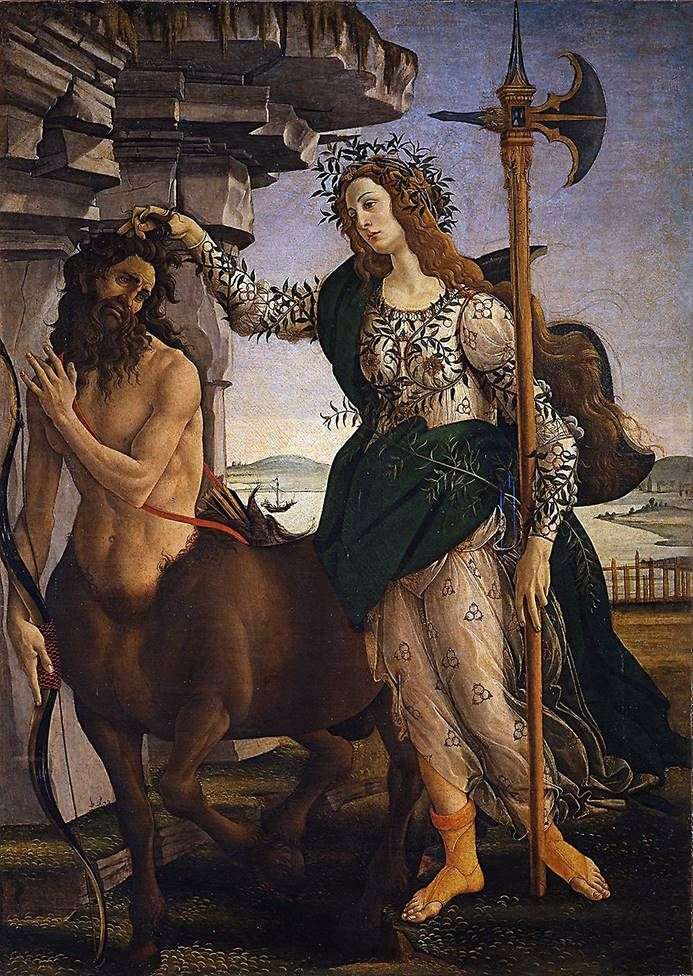
The painting “Athena Pallada and Centaur” or “Minerva and Centaur” was written for Giovanni Pierrefrancesco de ‘Medici and was in Villa Castello together with “Spring” and “The Birth of Venus”.
Previously, the picture saw a political allegory, dedicated to the insight and art of Lorenzo the Magnificent in matters of diplomacy. It was believed that the Pallas personifies the Medici victory over the conspirators or success in countering the aggressive plans of the Neapolitan king. The basis for this interpretation was the medical emblems with which the goddess’s attire was embroidered. However, there is no other confirmation of this hypothesis. In the second half of the 15th century, there was no tradition to write political allegories of this type. It is more legitimate to see in the allegory a moral orientation.
At the heart of her idea is Ficino about the duality of the nature of man, which combines the animal principle associated with the life of the body, and the sphere of spirit and mind, striving to achieve heavenly wisdom. And only divine grace allows you to overcome the pains of the soul, languishing in the fetters of the body.
Representing a centaur, the artist used a specific antique prototype – the figure of the sarcophagus, now stored in the Vatican Museum. However, the picture differs from ancient monuments that the artist depicted not a physical battle between Minerva and the centaur – “centauromachia”, but “psychomachy”.
Centaur represents Botticelli in a man in a low and high. Bow and arrows in his hands point to animal passions, but to the face of Centaur the artist has given expression of deep suffering, peculiar to saints in his paintings.
Instead of Athena Pallada, a warrior who, from the time of antiquity, was supposed to be depicted with a helmet, shell and shield, with the head of Gorgon Medusa, Botticelli painted “Minerva-pacifiku”, whose attributes – spear and plum branch – symbolize virtue. In the treatment of the Pallas, Botticelli also follows the classical example, but in this figure there is a marked similarity to the Christian saint.
Neoplatonic subtext is also responsible for the landscape, composed of gloomy rocks and enchanting distances.
There are a number of allegorical interpretations of this work. It saw the victory of Lorenzo the Magnificent over Naples, the victory of the Medici over Pazzi, the combination of passion and wisdom in Lorenzo. There is also a broader interpretation of it as the victory of wisdom over passions, which was discussed in the circle of the Medici. An understanding of the picture as a general victory of the forces of the world over the forces of destruction was also suggested. In this case, its content is close to the contents of the picture “Venus and Mars”.
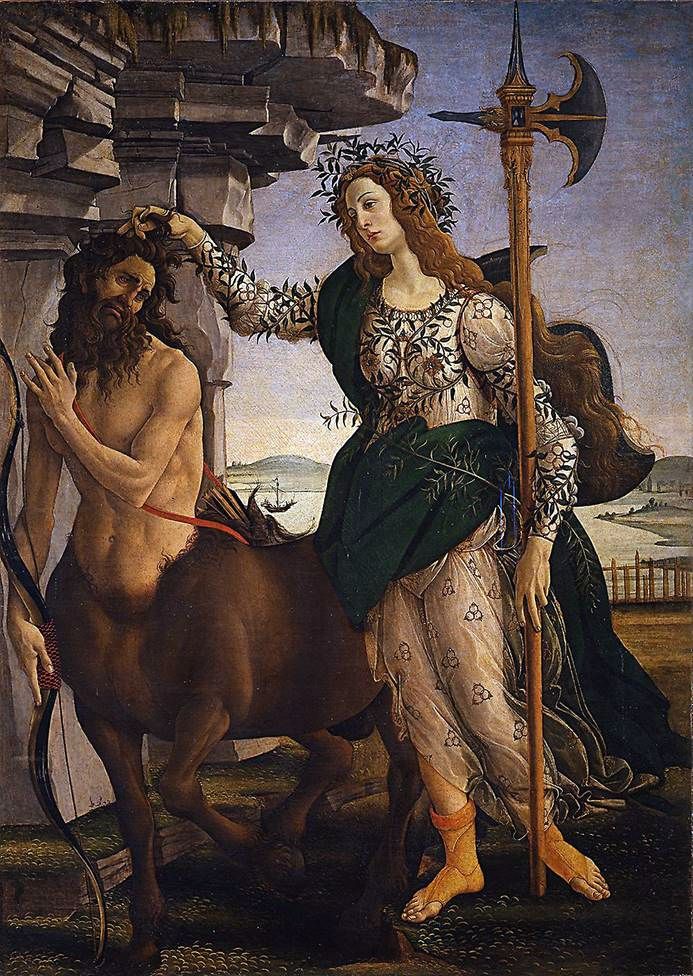 Athena Pallas et le centaure – Sandro Botticelli
Athena Pallas et le centaure – Sandro Botticelli Athena Pallada by Gustav Klimt
Athena Pallada by Gustav Klimt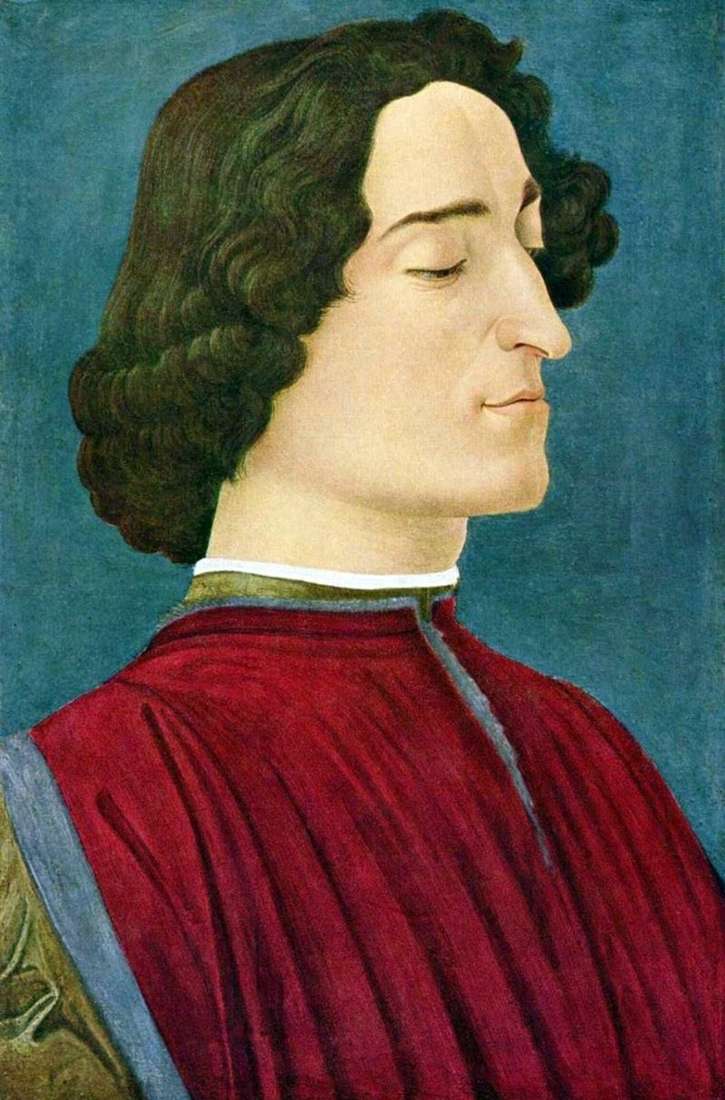 Portrait of Giuliano Medici by Sandro Botticelli
Portrait of Giuliano Medici by Sandro Botticelli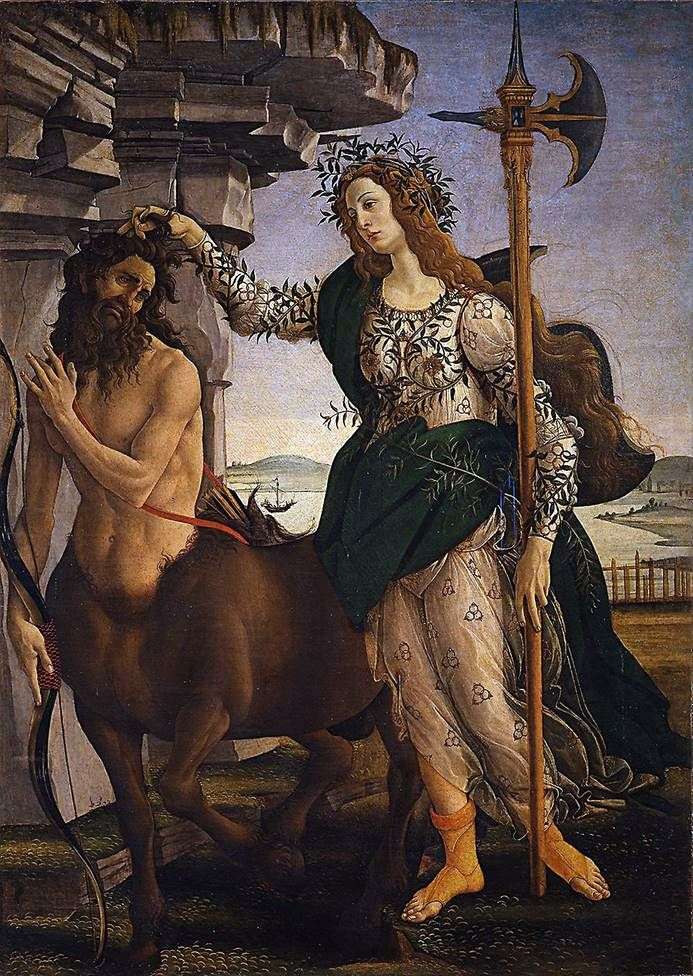 Atenea pallas y el centauro – Sandro Botticelli
Atenea pallas y el centauro – Sandro Botticelli Primavera (Spring) by Sandro Botticelli
Primavera (Spring) by Sandro Botticelli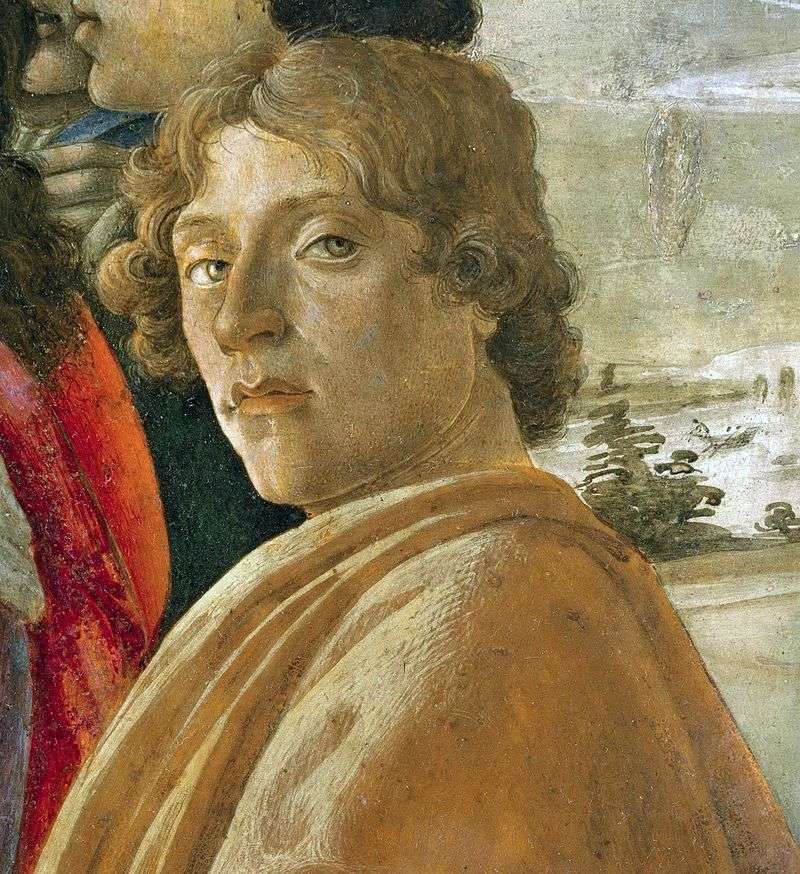 Self-portrait by Sandro Botticelli
Self-portrait by Sandro Botticelli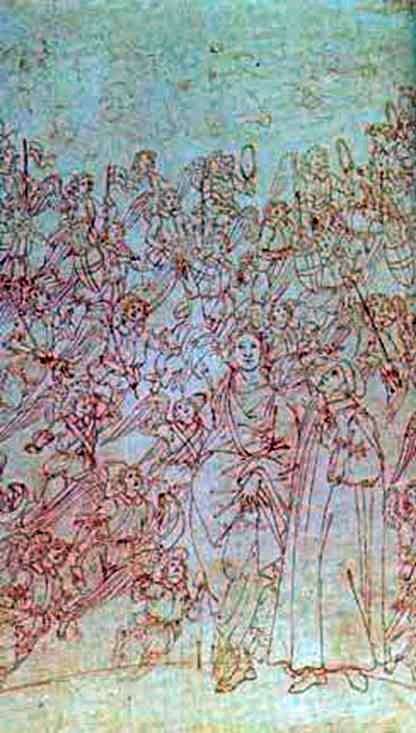 Dante and Beatrice, from the “Divine Comedy” by Sandro Botticelli
Dante and Beatrice, from the “Divine Comedy” by Sandro Botticelli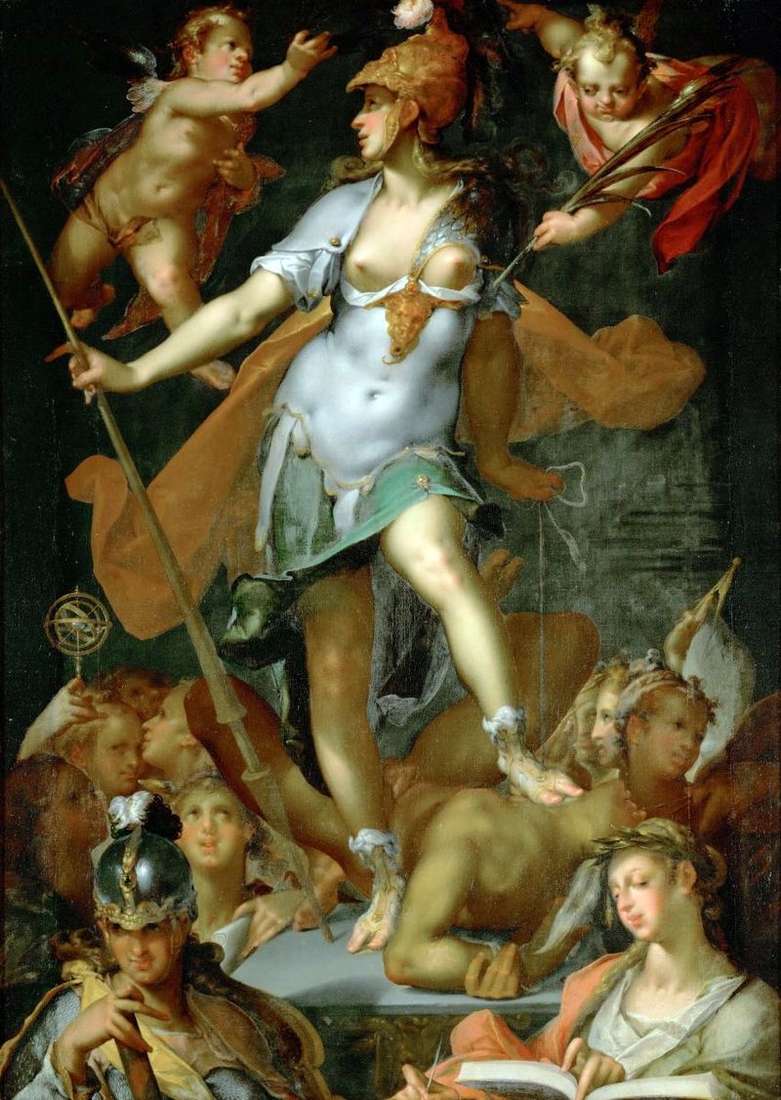 Minerva, the winner of Ignorance by Bartholomeus Spranger
Minerva, the winner of Ignorance by Bartholomeus Spranger